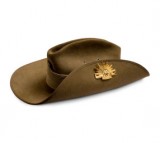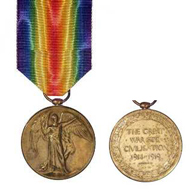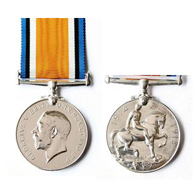NORBERY Stephen
-

- 4349
- Private
- 15 Battalion
- 31 Battalion
- Landsborough Shire
- Yes
- 1886
- Mudgee NSW
- 9 September 1916
- HMAT A55 Kyarra
- 17 November 1916
-
Bridge carpenter Stephen William Norbury was born in Mudgee, NSW and was nearly 30 when he enlisted at Bell's Paddock, Enoggera, on 9 September, 1916. His brother Herbert Henry Norbury, had enlisted in Bathurst in January the same year and left Australia in April with the 2nd Reinforcements for the 45th Infantry Battalion.
Six weeks after enlisting, and four weeks before embarking for overseas, Stephen married Agnes Anslie McKee, eldest daughter of Queensland Railways maintenance inspector W.J.McKee. With his wife living with her parents at College Road, Spring Hill, Brisbane, he sailed in the troopship A55 'Kyarra' with the 11th Reinforcements of the 31st Infantry Battalion for England.
He landed at Plymouth on 10 January 1917 and began training at the 8th Training Battalion at Hurdcott, north -east of Salisbury in Wiltshire. Thirteen weeks later he was on his way to France, to the 5th Australian Divisional Base Depot at Etaples. He marched into the 31st Battalion at Le Havre, but after five days, on 16 June 1917, was transferred the 15th Battalion. Queensland volunteers made up 75 percent of the Battalion when it was raised in 1914. The remainder came from Tasmania. With the 13th, 14th and 16th Battalions it formed the 4th Brigade, commanded by Colonel John Monash. The Battalion had served at Gallipoli and in June 1916 sailed for France and the Western Front. It had taken part in the bloody trench warfare at Pozières in August 1916 and suffered heavy losses at Bullecourt in April 1917. Stephen joined the Battalion in its advance to the Hindenberg line On 19 August 1917, he received the first of two wounds. Two months earlier his brother had been shot in the chest while serving with the 45th Battalion. Stephen's Battalion War Diary shows the Battalion had been heavily shelled since moving into the support line on Messines Ridge on 4 August, and the front line 10 days later. Amid artillery fire from both sides and enemy aircraft buzzing the trenches, work parties carried rations and water up from the rear and continued linking up the Battalion's positions. During one artillery barrage, he was hit in the scalp by fragments from an exploding shell. Stephen was treated at Field Ambulance units and returned to his Battalion 12 days later. In less than a month, on 26 September, he was wounded again. The Battalion moved up along the Menin Road from its bivouac site on the Ypres Ramparts the night before to take its place on the start line for the advance to the Anvin-Verchin railway line. Two other Battalions began the attack at 5.50 a.m behind a creeping artillery barrage and at 8.35 a.m. Stephen's battalion pushed through them, taking the objective by 9 a.m. In the process, he became one of the Battalions 150 casualties in the battle, receiving a broken thigh. The wounds took him to England in the Hospital ship HMHS Jan Breydel via the Canadian 2nd Stationary Hospital at Outreau in France. He spent more than two months in hospitals in Bristol and Dartford before being transferred to the 2nd Command Depot at Weymouth, Dorset on 23 Jan 1918. On 10 March 1918, he boarded the SS Durham Castle, a commercial ship on the England- South Africa run. On 19 April he joined RMS Orontes in Capetown and arrived home in Brisbane on 14 May 1918, just 18 months after leaving Australia. The Brisbane Courier reported on 18 May that the troop train carrying 177 sick and wounded, including Stephen arrived to crowd-lined streets, brass and Scottish bands and festoons of flowers across city streets. They were escorted from Central Station up Queen Street to Victoria Bridge by a band and an honour guard with fixed bayonets. At the Kangaroo Point Military Hospital they were welcomed by the Governor, Premier and Mayor of Brisbane. After further treatment on his thigh, he was discharged on 14 June 1918 in Brisbane. Brother Herbert was discharged the next day, in Sydney. Stephen worked as a lineman after the war and he and Agnes lived at Wooloowin and later in Macauley Street, Coorparoo. They had a daughter, Enid Anslie on 3 August 1919 and sons Stephen William Reginald and Ronald Scott on 24 July 1921 and 23 December 1925 respectively. Another son, Dudley, died in infancy on 4 September 1930. Military service was carried into the next generation. Two weeks before the outbreak of World War 2, son Stephen joined the Navy and was lost when the cruiser HMAS Sydney was sunk in by the German raider Kormoran off Geraldton on 20 November 1941. Ronald put his age up a year to join the Army in 1943 and served in Australia, Morotai, Balikpapan and Rabaul until more than a year after the end of World War 2. He was discharged in November 1946. Enid married in 1950 and her father Stephen died on 8 July 1960. His name appears on the Honour Roll in the Ann Street Presbyterian Church in Brisbane.
- Messines
-

-

- 14 May 1918
- 8 July 1960
- Brisbane
-
Honour Roll, Ann Street Presbyterian Church, Brisbane
-
Qld BMD
NSW BMD
Brisbane Courier
Courier Mail
Qld Railways Staff Index
AWM WW1: Embarkation Roll
AWM WW1: Nominal Roll
AWM WW1: Official History
AWM WW1: Unit War Diary 51 Battalion
The Ships List - Caloundra Family Research
